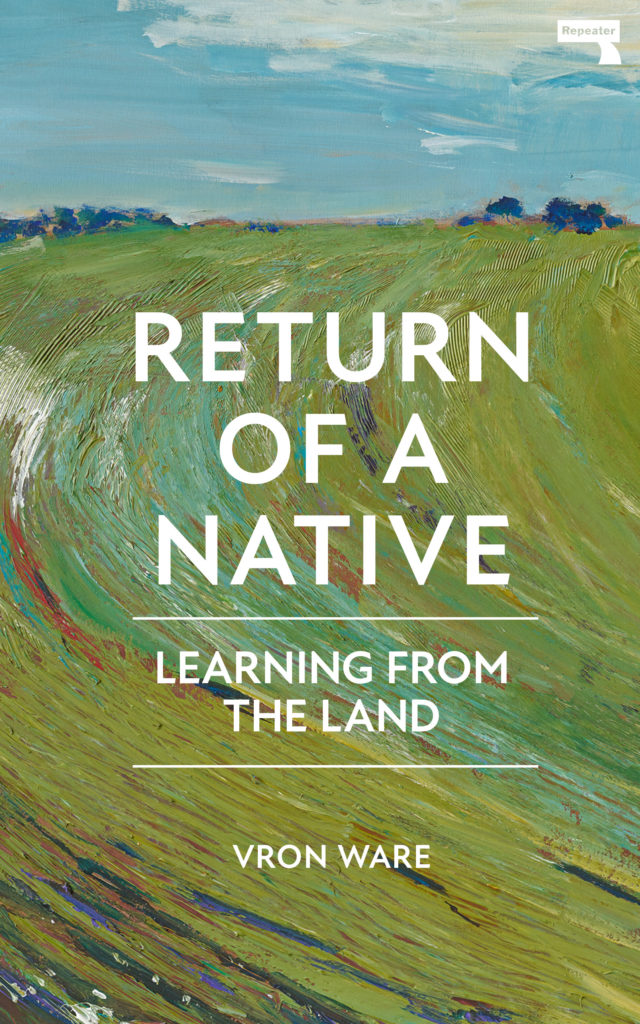Published by Repeater Books, Vron Ware’s ‘Return of a Native’ seeks to show how the artificial divide between rural and urban obscures the underlying relationship between these two fundamental poles of human settlement. Nicola Chester reviews.

Vron Ware’s book Return of a Native begins where she herself began — near a rural crossroads, marked by a Hampshire fingerpost, crowned with a finial like a Polo mint, bearing the name ‘Pill Heath.’ It is a spot I know well. Though it is not one of the distances marked in raised letters on the black-and-white post, the high chalk of Gallows Down is a mere 7.1 miles from this point, and my house barely a mile from there.
The Pill Heath signpost is one and three-eighths of a mile from Ware’s mother’s home in the deliciously named hamlet of Wildhern; a place any of my three teenage children would describe with fond eyerolls, as ‘the sticks. The actual middle of nowhere.’
And so it is — and yet, also isn’t. Return of a Native is a remarkable book that takes its pastoral, particular position, physically scuffs and scratches at the flinty, chalky soil there, then raises its enquiring eyes to the horizon.
It examines, through deep, forensic social archaeology, and a collection of interviews spanning twenty-five years, how the world comes to this, and every small corner of England. As well as how a small hamlet comes to meet the world, too.
Far from being the unspoilt, rural idyll of estate agents’ dreams, Ware reveals the countryside as a place of change and contention, progress and resistance, capitalism and commons.
Pill Heath itself is a recent, stealth-enclosure of former common land. Now the colours of the heath and those ‘local landscapes of arable England are almost interchangeable, their hues determined by policies and prices set far away’.
Ware’s book is a profound, wide-ranging look at rurality and the local’s position on the world’s stage, in time and place. It’s an interrogation, an excavation, an interview with the very ground beneath our feet — its people, politics, economics, society, class, gender, race, food production, ecology, history and environment.
We are taken down a ‘crazy maze of anonymous, unnamed lanes’ and into a kind of three-dimensional map of ownership, use, colonialism and enslavement, animal welfare, environmental degradation, protest, extremes of wealth and poverty, trouble, nationalism and the industrialisation of the countryside. This is a book with scope.
It is a deconstruction and building back up of the rural narrative. Although the topics ‘butterfly’ along, we see them all illuminated with connection, like the bioluminescence of underground mycelia lighting up fruiting bodies on the earth’s surface through layers of mulched history. It’s a big book, but it reads so well.
We visit the astonishing violence of the Swing Riots — to machinery (by the rural working poor) and to people (by the upper classes upon them) and the strange influence of religion (the destruction of the Tasker iron foundry ceases abruptly on the Sabbath) and the compassion of community (the foundry owner refusing to identify the rioters). And we visit the terrible deprivation of the Andover Workhouse a few years later. We meet characters like Sheila, employed to clean the gentrified cottage she and her father were born in, and, in sharp contrast, ‘new’ Lords of the Manor, such as ‘The Brigadier’ or H&M heir Stefan Persson, who own whole villages and vast shooting estates that, one way or another, I and my family have worked for. The influence of ‘The Big House’ has not entirely disappeared.
Writing about the return of another native, author and peace activist Kathleen Innes (a contemporary of Lark Rise to Candleford’s Flora Thompson), Ware picks up on the phrase ‘unspoilt English rural scenery,’ admitting wryly, ‘I know what she means. It’s just that we might want to treasure these things in all sorts of places if we are to understand how to survive…mistle thrushes in city parks…the soft brush of the leaves does not belong to a separate realm of experience; it is intrinsic to human health and survival.’
So much is covered in this intriguing romp through acres of land: the Women’s Institute, chicken-in-a-basket meals eaten (thrillingly to a 1980s child like me, with your fingers) a (disastrously flammable) factory run entirely by robots, protests by dairy farmers and environmental activists (against new roads) the importance of provincial media and the way a local shooting is portrayed in national media (as if it shouldn’t/couldn’t happen in such a peaceful spot, where the average house price is mentioned along with the victim’s name — and a local farm labourer killed 16 people on a Market Day in 1987, just down the road from us both).
Return of a Native is a spirited, hugely enlightening, thought-provoking and often funny challenge to the boundaries between rural and urban, remote and near. It shows us that by engaging with where we are (no matter where we come from) and looking outwards, we can better understand our responsibilities to the planet, and how we all belong.
*
‘Return of a Native’ is out now and available here (£15.79).
Nicola Chester is the author of ‘On Gallows Down: Place, Protest and Belonging’. You can follow her on Twitter here.